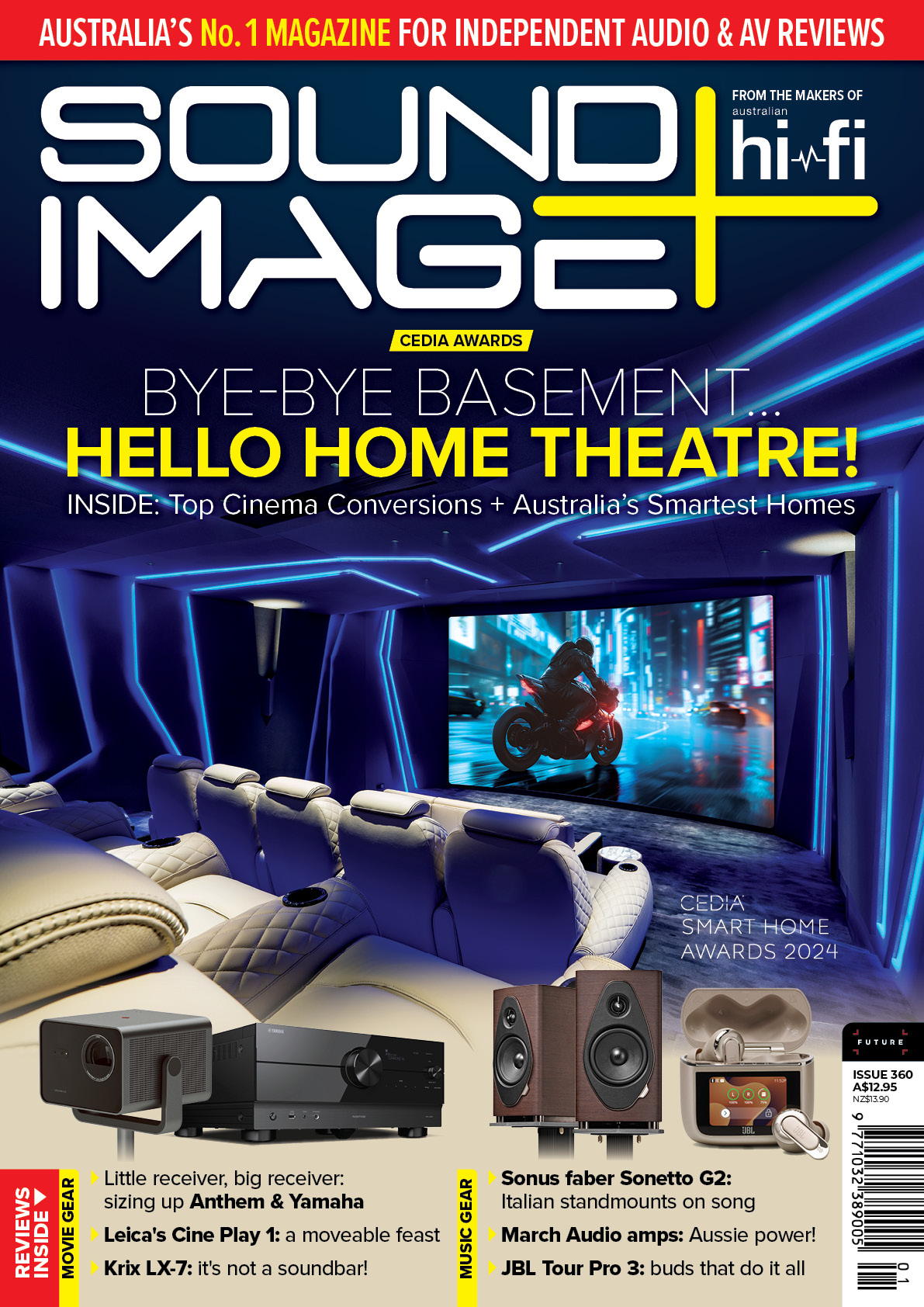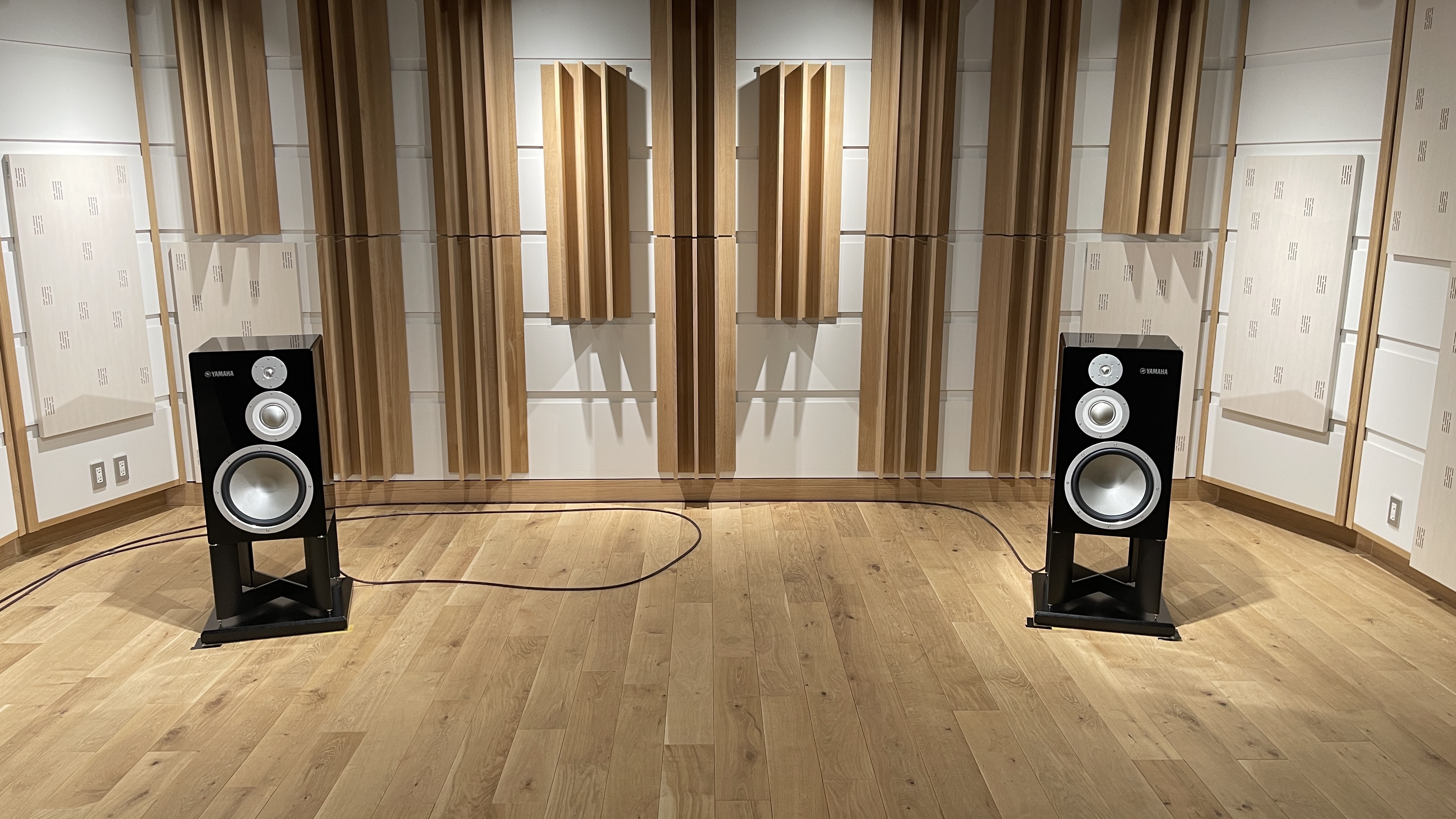Aussie home theatre rooms: Check out this Wavetrain Cinemas 17-speaker setup
Wavetrain Cinemas uses new technology to deliver a state-of-the-art home cinema
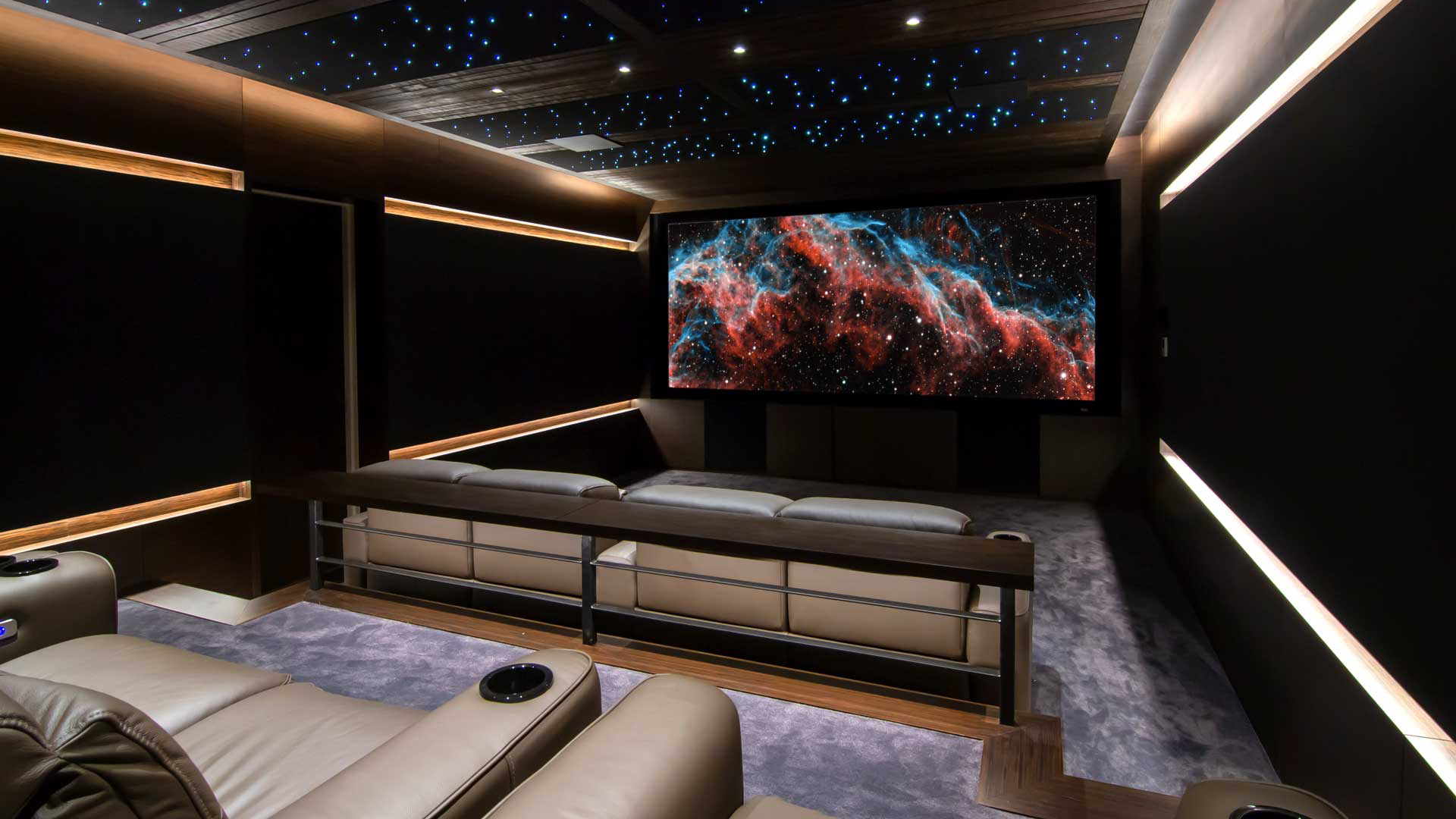
If you’re going to build an extension to your home, what better use for it than a reference-level home cinema! Wavetrain Cinemas was engaged to design this home’s new cinema space from the ground up, as an extension to the existing house.
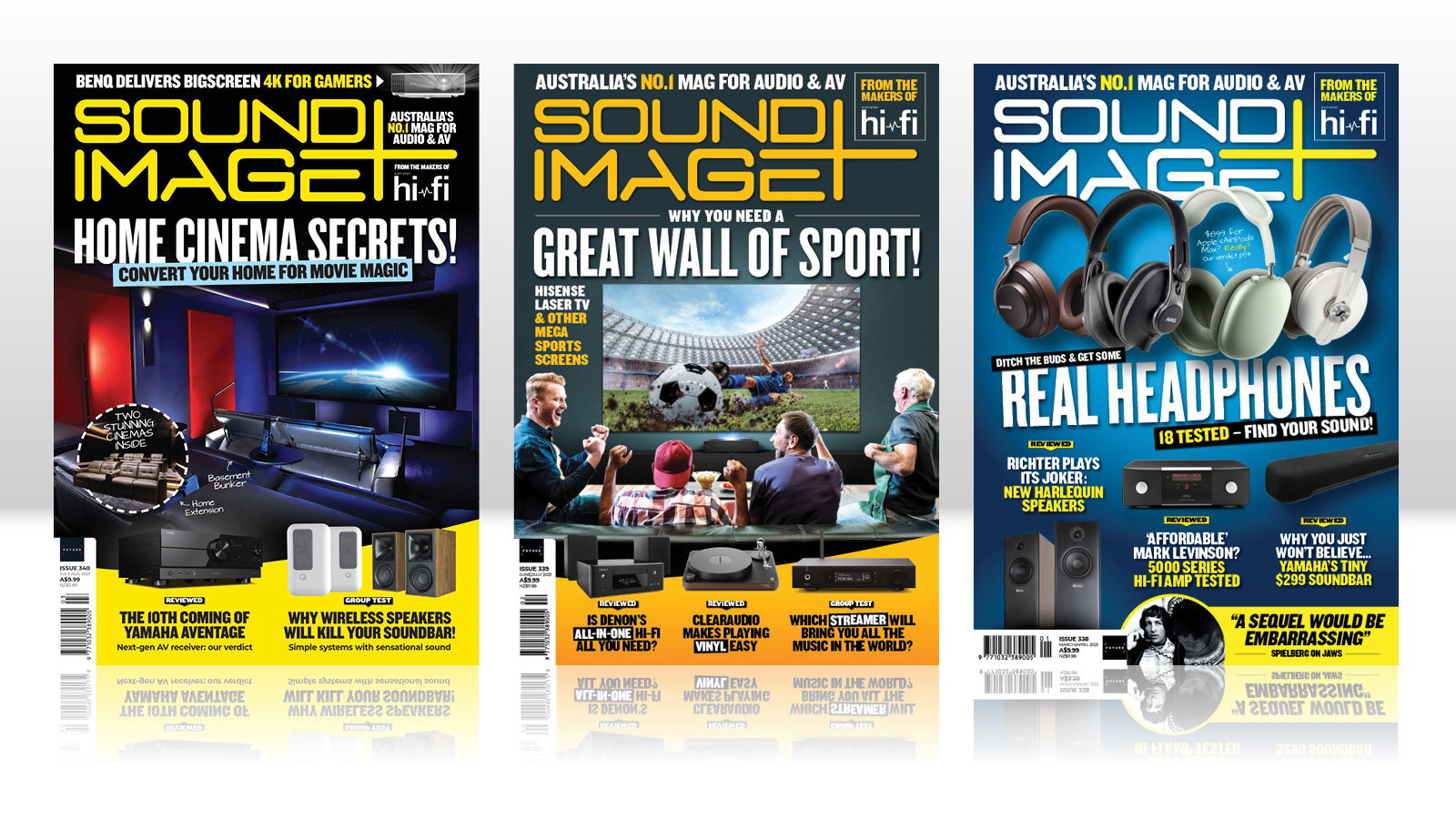
This feature originally appeared in Sound+Image magazine, one of What Hi-Fi?’s Australian sister publications. Click here for more information on Sound+Image, including digital editions and details on how you can subscribe.
“The client was after a cinema that could match commercial cinema performance,” says Wavetrain’s David Moseley. “And from the very start we knew we would exceed that goal by correctly designing all elements of the cinema.” And according to the lucky owner of this eight-seat theatre, David Moseley’s confidence was not misplaced.
“Wavetrain far exceeded what I thought would be possible in a home cinema environment,” the owner tells Sound+Image. “Initially I thought it was about ‘coming as close as possible’ to the commercial cinema experience. How wrong we were! This project flipped the tables – now the commercial cinema experience falls far short.”
Making a Statement
While Wavetrain describes itself as “a complete turnkey cinema company”, able to follow any preference for any space, it can also help ease the potentially overwhelming task of going from empty space to working home cinema by having a number of pre-designed home cinema options which can be tailored to the owner’s particular requirements.
Step one, it says, is simply to make an appointment. Step two is to discuss your goals and experience Wavetrain’s demonstration rooms in Taren Point, Sydney, to experience what’s possible and get inspired. And step three sees Wavetrain then “handcraft a cinema that brings your vision to life”, producing architectural drawings, the mechanical and acoustic engineering, supplying the entire cinema fit-out, and then undertaking final audio/video calibration.
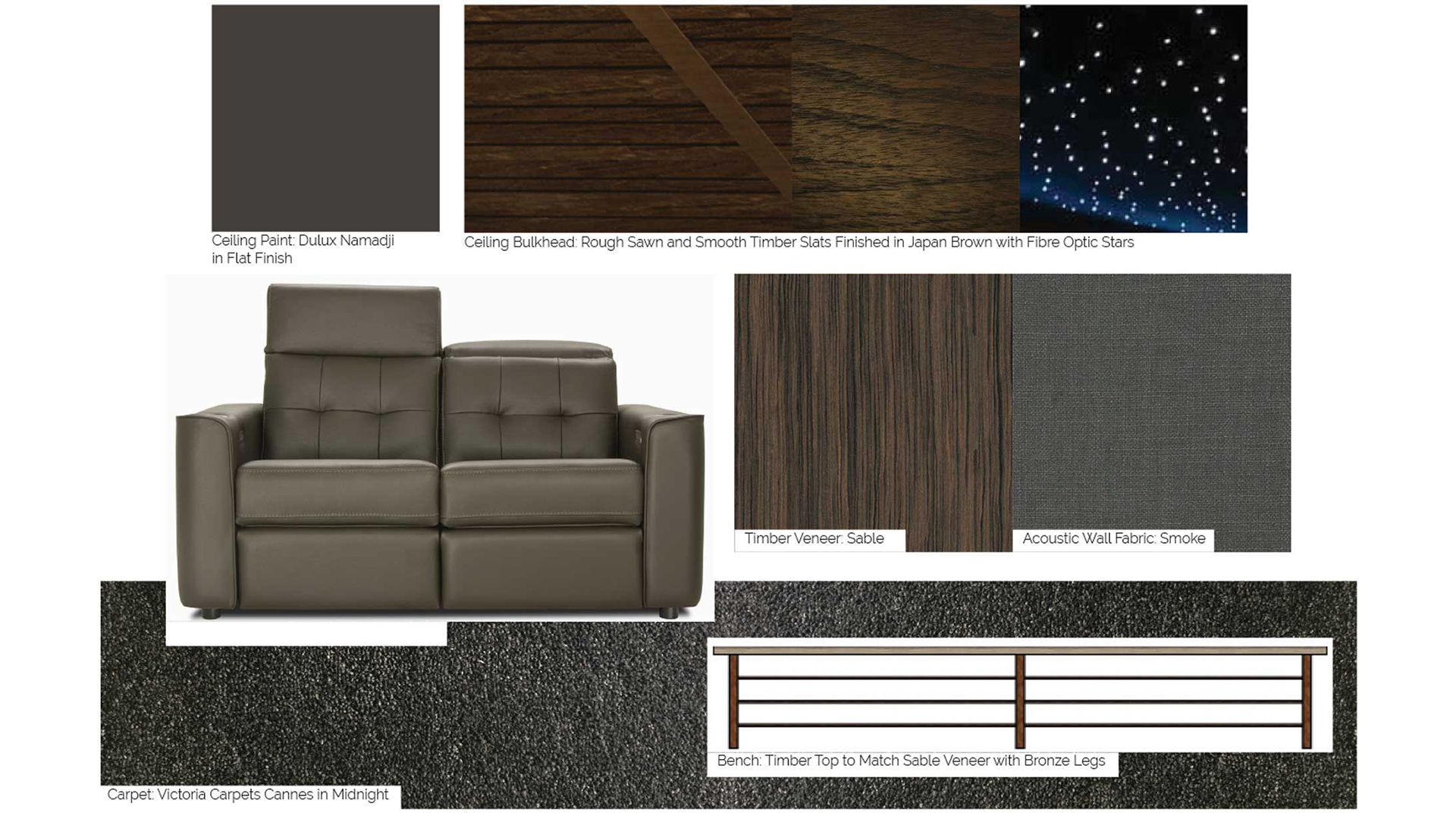
Wavetrain is also notably proud of its role in interior design. In this case, the clients had selected a cinema design from one of Wavetrain’s ‘Statement Cinemas’.
“These pre-designed cinemas mean we can concentrate on engineering the room, leaving the only real choices as carpet, fabric, timber and chair colours, which can be handled by our Interior Design team. In this case the clients wanted a clean-lined contemporary cinema design, and the twist in the design was the fibre-optic star ceiling.”
Get the What Hi-Fi? Newsletter
The latest hi-fi, home cinema and tech news, reviews, buying advice and deals, direct to your inbox.
Equipment list
- Panasonic DMP-UB820 UHD Blu-ray player
- Nvidia Shield TV Pro streaming media player
- Gaming PC prewired for addition
- Gaming console prewired for addition
- BenQ LK990 4K HDR projector
- Severtson 165-inch CinemaScope projection screen
- Lumagen Radiance Pro 4242 4K video processor
- Anthem AVM-60 11.2-channel AV processor
- Elementi Phoenix speakers x 3 (LCR)
- Elementi Tungsten amplifiers (2 x 1000W) x 3
- Elementi Basalt 12-inch subwoofers x 2 (rear)
- Elementi Tungsten amplifiers (2 x 1000W) x 3
- Theory Audio SUB15 subwoofers x 2 (front)
- Theory Audio SB-25 loudspeaker x 6 (surround)
- Theory Audio ALC-1809 9-channel power amp (for front subs & surrounds)
- Triad Bronze 8 LCR in-ceiling speakers x 4 (height)
- Triad PAMP1-200 power amplifier x 2 (height)
- Sanus 36RU AV rack
- Isotek EVO3 Corvus 9-outlet filter power board
- IsoTek EVO3 Mini Mira 2-way AV power conditioner
- MSR Acoustics diffusers & other treatment (see article)
- RTI XP-6s control processor
- RTI XP RTiPanel iPad software
- Lutron lighting control
- Wavetrain seating (2 x Loveseats, 4 x armchairs)
- D-BOX haptic technology on 1 Loveseat; back row all pre-wired for D-BOX
Audio & video configuration
There are, in all, 17 speakers in this home cinema, although David Moseley accurately describes the system as operating in 7.1.4. So that’s four ceiling speakers plus seven channels on the floor, though these seven are delivered from nine speaker positions, with L, C, R at the front, plus six surround speakers, with two speakers on each side to handle the side surround signal.
“Since we were using the 13.1-channel Anthem audio processor, we split the audio signal on the side channels to create a wider soundfield to the seating rows,” explains David. “One speaker can be too easy to localise, and can create a large gap between the front and rear speakers.”
Similarly the ‘.1’ in the 7.1.4 doesn’t indicate only a single subwoofer – this system uses four in total, with two 15-inch Theory Audio subwoofers at the front and two 12-inch digital active subwoofers from new brand Elementi (see below) bringing up the rear.
“Four subwoofers were used to ensure a smooth frequency response across all seats,” notes David. “So some people might mistakenly call this a 7.4.4 cinema, or even 9.4.4 given the split side surround speakers. But the subwoofers in the system are used as a single channel for low frequency extension. They are time-aligned and levelled to produce the best response before room tuning. Only once this is done correctly can the final system be calibrated.
It is possible to use multiple subs to provide bass steering [differentiating the bass signals to match their position in the room] when the cinema has been engineered to eliminate standing waves – and that is something we do in our higher-end projects. But the goal here was to deliver tight, even bass. So the true description of the system here is 7.1.4, despite the fact we are utilising 17 speakers and subs in all.”
Wavetrain was able to meet the budget of the client by using, along with the Anthem processor, a combination of Theory, Triad and Elementi speakers and amplification (see the equipment list).
The video system, meanwhile, includes a 165-inch Severtson CinemaScope projection screen, illuminated by BenQ’s LK990, which uses Texas Instrument’s pixel-flipping DLP XPR technology to deliver UHD (4K) resolution with 6000 ANSI lumens light output.
“The video system was designed to achieve 100 nits of screen brightness, which we consider essential to achieve a true High Dynamic Range image in a cinema environment,” says David. “This is approximately double the screen brightness of a commercial cinema and of what is required for SDR content. It provides a clear distinction between SDR and HDR content.”
The screen is 2.35-to-1 ratio, but no anamorphic lens is used here. Instead anamorphic changes are made using the go-to secret weapon we are seeing now in so many high-end home cinema designs – a Lumagen Radiance Pro 4K video scaler and processor.
“The Lumagen can remap the video to any configuration,” explains David Moseley. “In this instance we are not using an anamorphic lens, but rather we project within the 2.35:1 frame and then display 16:9 as either an image within the frame, or the client has the option to use Lumagen’s Non-Linear Stretch option to project a 16:9 image in a 2.35:1 frame. All the colour mapping and HDR conversion is also handled by the Lumagen.”
To make the most of the UHD/4K capabilities, sources include Panasonic’s DMP-UB820 UHD Blu-ray player and a Nvidia Shield media player, along with connections for both PC gaming and a gaming console.
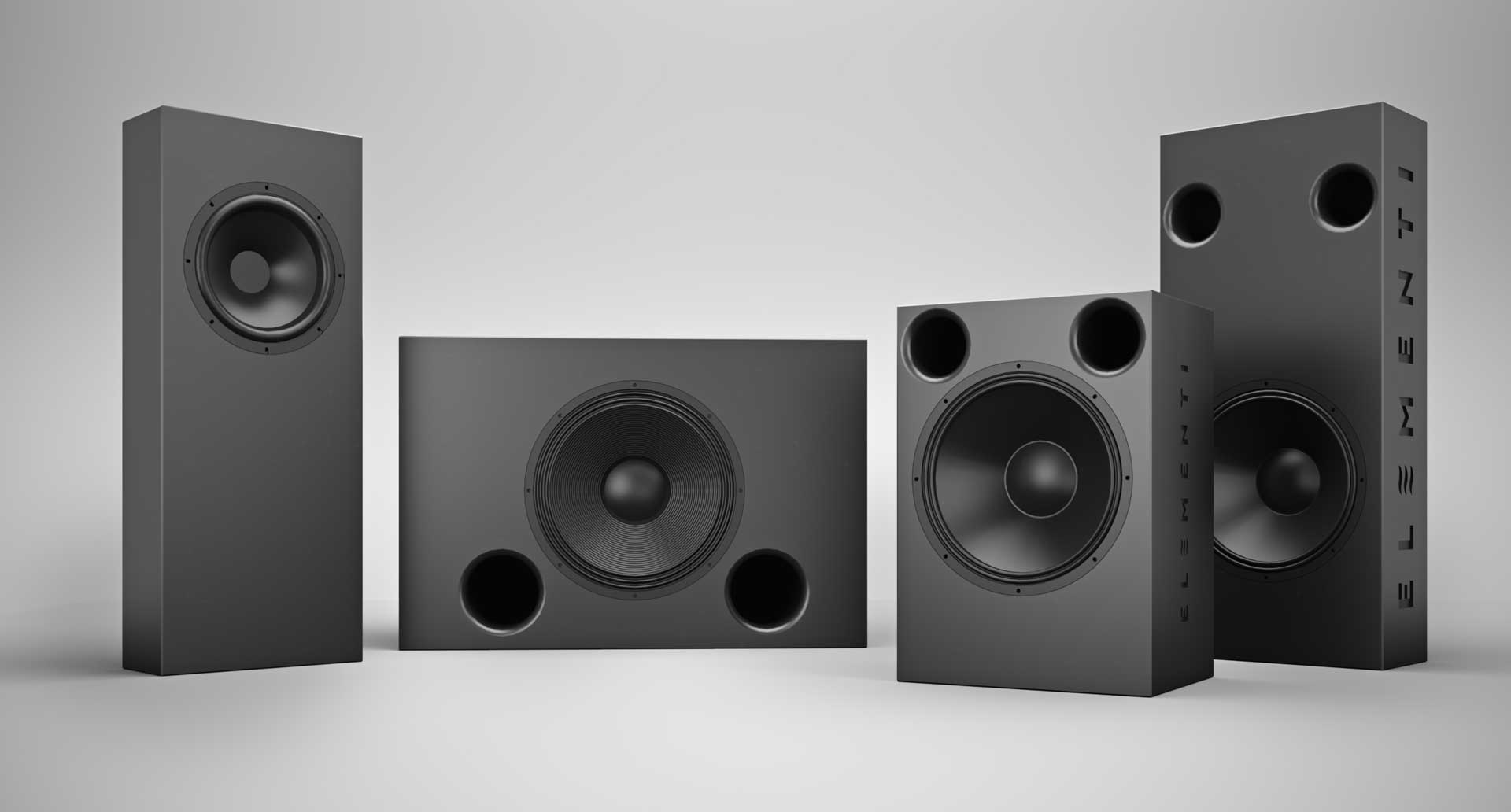
Enter Elementi
This home cinema is the first we’ve seen in Sound+Image to feature a new range of speakers called Elementi. Designed specifically for home cinema use (though the largest of them could potentially service commercial applications), the Elementi brand includes ‘Fire’ and ‘Air’ speaker ranges, plus an ‘Earth’ range of subwoofers, and an upcoming ‘Water’ range of Atmos speakers.
The ‘Fire’ range (pictured opposite) uses compression drivers for high frequency delivery, while the ‘Air’ models share the cabinet and mid-bass drivers from the Fire range but switch to a pleated diaphragm ‘tweeter’ along the lines of Oskar Hail’s air motion transformer.
MOVING THE AMPLIFIERS
Aside from the merits of each individual speaker design, Elementi brings a significant shift in equipment layout in a home cinema, by removing the power amplification from the main equipment rack. This delivers the usual active speaker advantage in avoiding the need to run long speaker cables, where electrical properties can significantly change over the longer runs required around a cinema and potentially through walls. Elementi notes that ideally speakers should be located within three metres of their amplifier.
Although the Elementi speakers are described as digital active, the amplifiers are not internal; the amplifier components are kept separate but adjacent to the speakers they individually power. The amps are relatively shallow and modular units designed to mount vertically against the cinema walls, hidden behind fabric or in joinery.
Audio signals can then be run over balanced analogue audio cables, or kept digital (via Dante audio-over-IP) right through the Elementi amplifiers’ floating 32-point DSP processing, digital crossovers, FIR filters (with correction in both the frequency and time domains), and high quality digital-to-analogue converters.
The actual power modules within these Elementi amplifiers are full bandwith PWM modulation Class-D modules from Danish company Pascal, whose modules have gained a reputation for both reliability and high-level sonic performance. Elementi’s 500W and 1000W amplifier models feature passive cooling which ensures they are silent in the cinema. The 2200W active models feature ultra-silent fans and suit front wall placement to run Elementi Audio’s most powerful speakers and subwoofers.
“One big issue doing custom installation work is the amount of heat that’s in a rack,” notes Wavetrain’s David Moseley. “You need to deal with it properly for longevity of equipment; if your power amplifiers run too hot, they’ll be in danger of falling over. So by removing the amplifiers from the rack, which is often a fair portion of what a rack might be, you get down to a situation where the equipment is only about 600mm to 1200mm in height, and there’s not a lot of heat in there.”
Having the amplifiers spread around the room has other benefits, including ease of servicing.
“If you’re using a digital active speaker design where the amplifier is in the back of the speaker, and if you custom-install that speaker behind a screen, typically you would have to install it from the front,” explains David. “Then if the speaker fails, you’ve got to take the screen out, and take the speaker out to get to the amplifier to work out the problem. It becomes a labour-intensive process to maintain a custom installation.
"Whereas if you have the amplifier mounted near the speakers, say under a screen where you can just pull off a panel and get to it, then you can work out if there’s an issue with that amplifier – is it working, is it on? You can get to it and unscrew it easily. The Elementi amplifiers are quite shallow; they take up only about 150mm in depth including cables. So we may have a frame at the front of the room behind which the amplifiers for the front speakers can fit, and we often have an acoustically-transparent curtain in front of the rear speakers which has enough space to fit the amplifiers as well.
“So they can be put into the position where they can best serve up the end result, whether that be thermally, or delivering a clean electrical signal to the speaker, or whatever facet you look at. And being modular they can deliver the power required for the speakers based on the SPL requirements.”
It means changes in some of the usual ways of wiring a cinema, and thinking in quite a different way.
“Yes, and especially with audio-over-IP,” says David. “Dante is probably the most robust of the audio-over-IP systems, and by using Dante the installers are then just wiring up standard data cabling, not having to terminate balanced lines. Everything becomes far less expensive, the terminations become quick and easy – and in the process you’re eliminating D-A and A-D conversions and just doing conversion at the amplifier itself.”
Speakers with a purpose
Elementi explains that the speakers themselves are also different partly because of how they have been designed for precise purposes within a home cinema. The Firefly, for example (pictured second from the right above) has an unusual waveguide with 120° horizontal dispersion and 40° degree vertical, and comes as standard with a bracket that can angle the speaker at 20° to the wall.
“So the speaker audio tracks the wall and then outward to 120 degrees,” notes Wavetrain’s David Moseley, who has already been involved in the design of a number of new home cinemas using the Elementi range. “That makes the Firefly perfect for front wides or surround channels, because the coverage is so wide, and means you can get much closer to the speaker because it’s not going to be such a point source in your ear.
"Yet it’s still high output – it can be used as a front LCR, where a very wide horizontal dispersion means the integration between the three front speakers is going to be seamless even for a big screen. Whereas with a narrow dispersion speaker behind a large screen you might have to add a couple more and do five across the front for a uniform sound field.”
Topping the Fire range is the Fire-Dragon, which Elementi tells us will hit reference levels at 25 metres, making it suited to rooms of any size, where other manufacturers would struggle, and even in commercial cinemas. Another full-on design is the Kola subwoofer (named after the deepest hole in the Earth), featuring single or dual 24-inch drivers delivering from 10 to 100Hz under 2200W of power.
And while compression drivers, as used in the Elementi Fire range, are not unusual in home cinema use, here the processing in the dedicated amplifiers makes a difference.
“These speakers employ FIR filters, which allow the speakers to be tuned accurately in the laboratory,” explains David Moseley. “Most compression driver systems are known to sound dynamic and detailed, but also harsh – vocals can sound like someone is speaking with a cone held to their mouth. Elementi has taken the best of what compression drivers have to offer and then tamed the sound by tuning not just frequency but phase. The result is a speaker that sounds powerful, clean, warm and effortless.”
Using digital crossovers prior to the amplification also ensures that if the bass drivers are being pushed hard, that strain does not show up in the tweeters to affect the quality of detail in the sound.
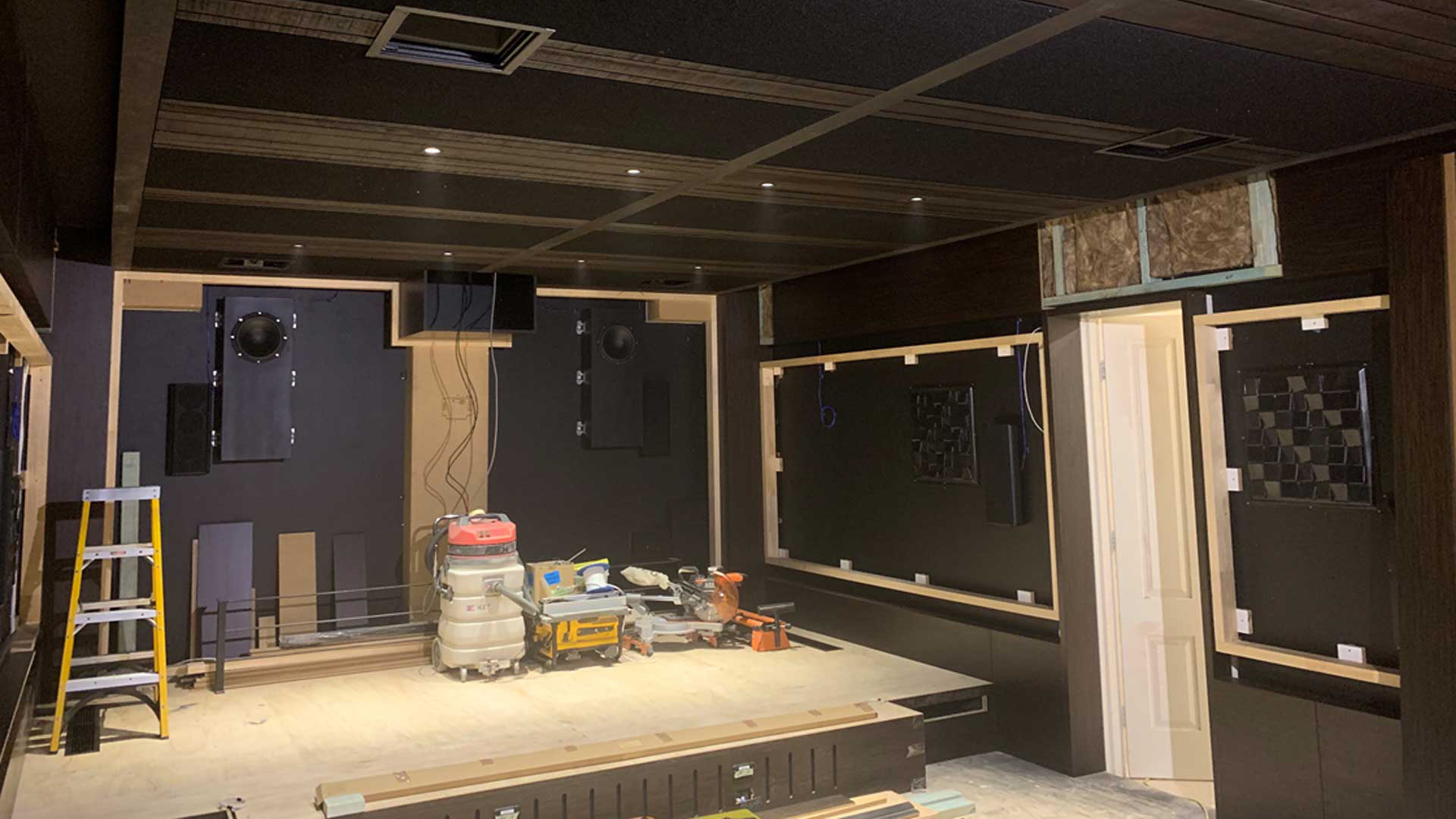
Getting the sound right
Wavetrain had the advantage of being involved from the get-go with this extension design, so had a headstart in getting the original room proportions ideal for purpose.
“Then you place seats into positions where they share common issues, and you place the speakers and subwoofers to eliminate the worst problems in the room,” says David. “Acoustic treatment improves the imaging, to tighten voices that are then easy to understand, and takes the edge off the harshness of the room.”
David Moseley is a fount of knowledge on cinema acoustics, having presented training courses for other cinema designers and installers. We asked him to explain in a nutshell why room acoustics are so important.
“The speakers will take on the sound of whatever acoustical space they are put into,” he explains. “And if you don’t understand what I mean by that, try walking around your home from room to room with either you or someone else talking, and listen closely to how the sound of the voice changes.
"You become a different version of yourself depending on the size of the room and the acoustic treatment in the room – carpets, rugs, curtains, furniture and so on. In a cinema room, once you have the acoustic signature of a space correct, you will be able to play the system at incredibly high levels, with no ear fatigue.
“We always use a combination of MSR and custom Wavetrain treatments. In this room the ceiling, seating platform and the front corners of the cinema are all custom bass traps. The ceiling also contains a custom absorption system for the first reflection from the front speakers.”
David notes that if the room has been correctly designed and treated, final tuning becomes a relatively straightforward process.
“The speakers and subwoofers are positioned to eliminate standing waves,” he notes, “and then we time, level and phase align everything to ensure the best result, and finally tune the cinema.
Tuning a cinema is the last step and should be a fine tuning of the system, not a fix for all the unresolved problems in a room. Good rooms and correctly-engineered systems produce great results, and tuning the room is just the icing on the cake.”
And where tweaks are required, he recommends downward adjustments, not upward.
“If the room has been done correctly, the final tuning of the system mainly comprises cutting some bass power in the room, rather than boosting the amplified signal,” he explains. “It’s an easy thing to forget that a 3dB boost requires twice the amplifier power, and that the increased driver excursion will introduce distortions.”
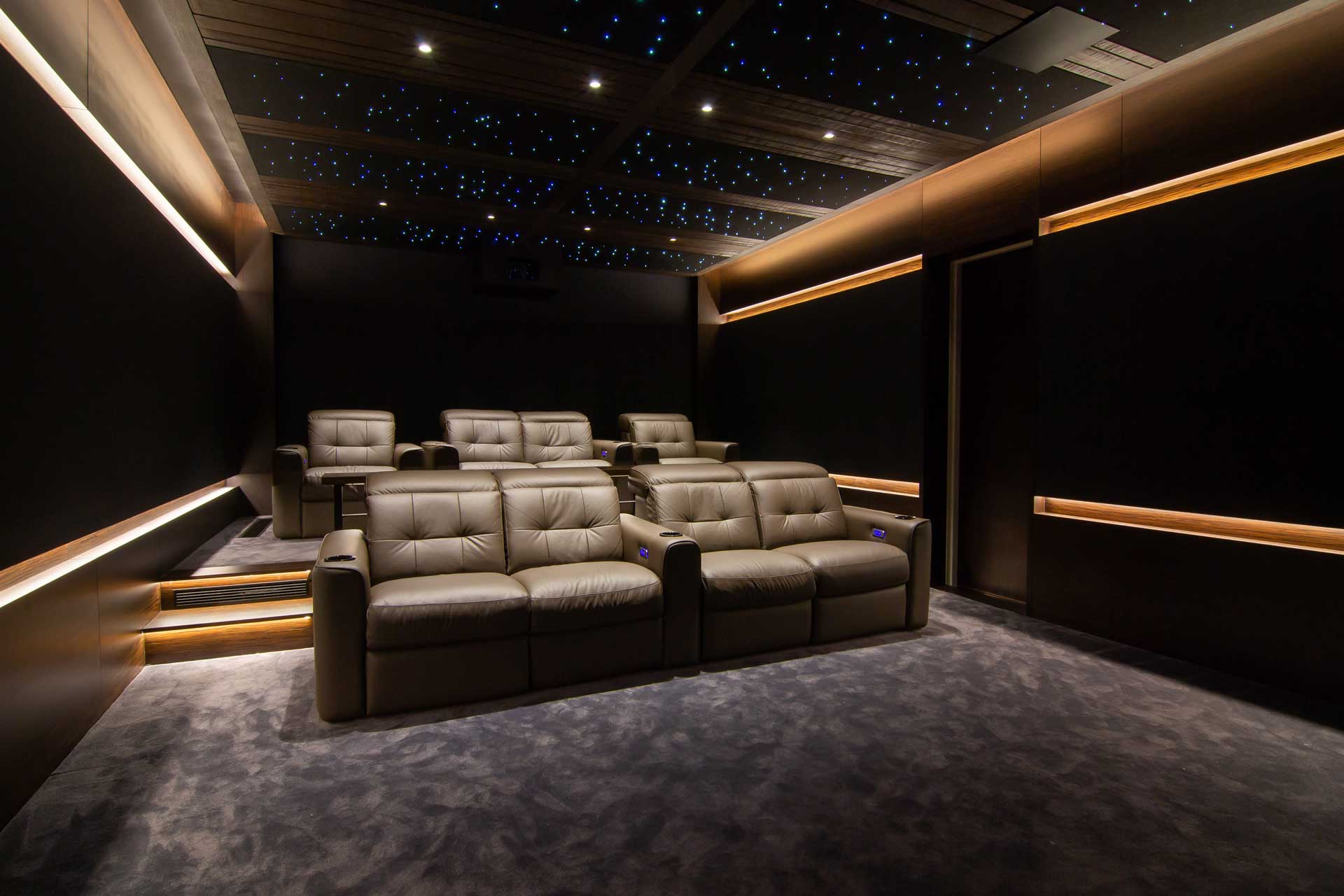
Motion pictures
There’s an extra dimension hidden in this cinema, and that’s D-BOX, the system that moves your seat in time with the movie, using carefully-designed cues created by the Canadian-based D-BOX team. You can experience this for yourself at public cinemas in Sydney or Melbourne, and Wavetrain’s demonstration rooms convinced the client that it’s an experience worth having, telling us that D-BOX was the “icing on the cake, stepping up the home cinema experience to the next level of immersion.”
Not surprisingly, as Wavetrain is the Australian distributor for D-BOX motion seating, David Moseley agrees.
“D-BOX is, in my opinion and that of our clients, an essential part of the cinema experience; it adds something tangible that cannot be experienced any other way,” he says. “Around 80% of all Wavetrain Cinema projects implement it.”
In this case D-BOX-ready seating was used on the whole rear row, as something which could be easily upgraded later once funds allowed.
“But at the end of the project,” notes David, “the client asked us to secretly add one actuator set in the centre loveseat, without telling his wife – a surprise! They are now looking to add more, to stop the fighting over who sits in the loveseat…”
Since completing the cinema, Wavetrain has been further engaged to design a drinks bar outside the cinema, which will also act as a butler’s pantry for the home’s new kitchen and living room areas, in which Wavetrain will also be involved. Part of the new expanded brief is to address the sound issues in the whole home, to enhance the way that the clients live. I
t’s something well worth remembering — that acoustic treatment is not just for music and movie rooms. The owners here notably describe their home cinema as being “a perfect space to relax, unwind and celebrate the hard work put into its inception.”
“Watching everything in 4K resolution and vibrant colour is tremendously rewarding,” they tell us. “But it’s the audio that truly blows you away – so much power, so clean. My wife almost cried, hearing this for the first time.”
Sound+Image is Australia's no.1 mag for audio & AV – sister magazine to Australian Hi-Fi and to the UK's What Hi-Fi?, and bestower of the annual Sound+Image Awards, which since 1989 have recognised the year's best hi-fi and home cinema products and installations. While Sound+Image lives here online as part of our group, our true nature is best revealed in the print magazines and digital issues, which curate unique collections of content each issue under the Editorship of Jez Ford, in a celebration of the joys that real hi-fi and high-quality AV can bring. Enjoy essential reviews of the most exciting new gear, features on Australia's best home cinemas, advice on how to find your sound, and our full Buying Guide based on all our current and past award-winners, all wrapped up with the latest news and editorial ponderings. Click here for more information about Sound+Image, including links to buy individual digital editions and details on how best to subscribe.
